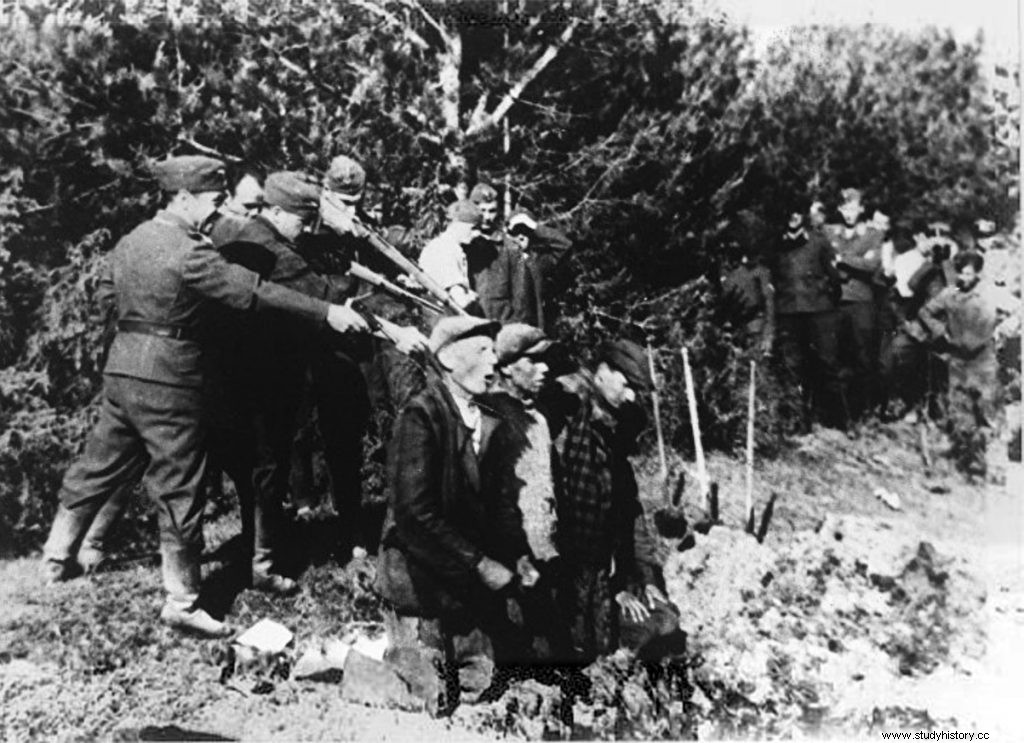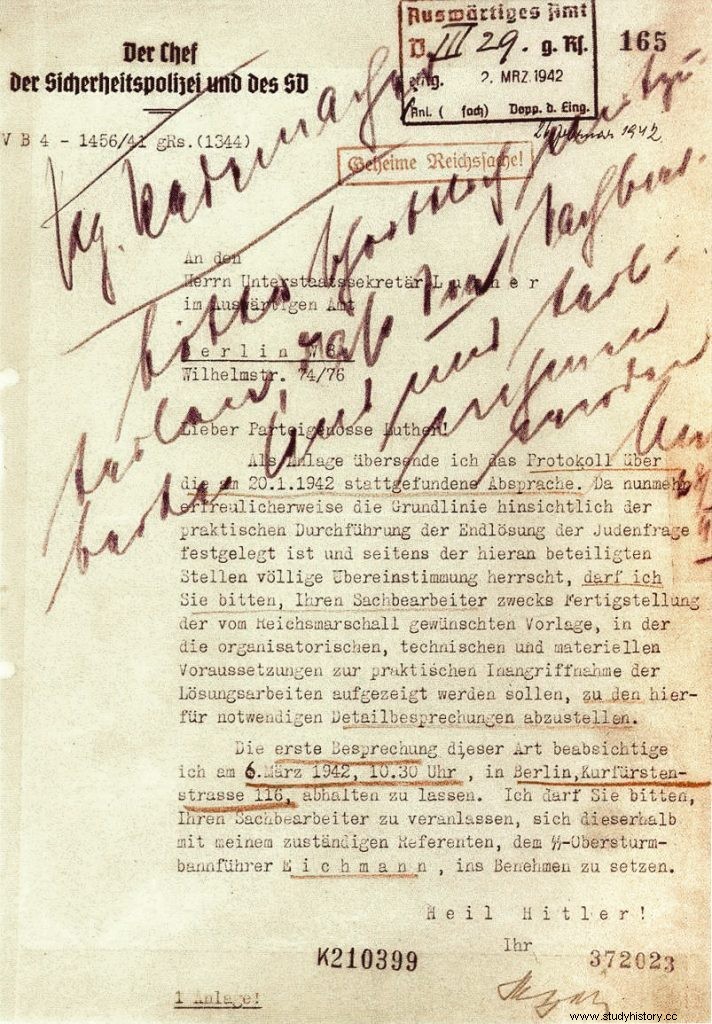When you think of the Nazi party and what they did during their 12 years in power, one of the first things that comes to mind is the Jewish holocaust. Due to documentaries and movies, it seems that the Nazi party was only trying to wipe out European Jewry and that the second world war was started solely for this purpose. The story, however, is a bit more complex.
When the Nazi party came to power in 1933, the Jewish problem that the Nazis said Germany had was not. In 1933 the Jewish population of Germany was around 0.7% of the total. This population was mostly urban and dedicated to liberal professions or business. It is true that their presence in public life was quite common, since many Jews were engaged in the arts or politics. For example, up to 7% of the Reichstag deputies were Jewish.
The first step that the Nazi party and its supporters took with respect to this population is to start branding them as different, as non-German. In April 1933 a public boycott began where Nazi party stormtroopers, the SA, began marking Jewish premises, encouraging Germans not to deal with such people. Also Jewish state officials were kicked out of their jobs and Jewish children were not allowed to enter public schools anymore.

The next big step was taken in 1935. That year the well-known Nuremberg laws were enacted. These laws typified what it was to be Aryan and what it was not to be. According to these laws, Judaism ceased to be a religious belief to become a matter of blood. From this moment on, every person who had at least one Jewish grandparent would be legally considered as such. These laws finally made it possible to mark the Jews of Germany, who were identified by name. All persons legally considered Jewish were required to add a middle name to their identity cards. For men Israel, for women Sara.
The Jews and the concentration camps
The direct attack on the Jewish population began on the night of November 9, 1938. The night of broken glass marked the beginning of the direct persecution of this population and their incarceration in concentration camps. After the murder of a German diplomat in Paris by a Polish Jew, the German population took to the streets pushed by the Nazi authorities. Shops, homes and synagogues were raided by the mob and many were set on fire. From that moment on, Jews were sent to concentration camps for the simple fact of being legally considered as such.

Despite the persecution suffered by the Jewish population in Germany, the first objective of the Nazis was to leave the country. Between 1933 and 1938, due to harassment, the majority of the German Jewish population went into exile. The other European countries did not want them, so thousands crossed the Atlantic in the direction of the United States and Argentina, mainly. Of the 750,000 people considered Jewish in Germany in 1933, it is estimated that around 160,000 died in Europe until 1945.
On September 1, 1939, the Second World War began. Wartime gave the Nazis the opportunity to be much more expeditious in destroying European Jewry. In Poland, the millions of Jews who lived in this country began to suffer from the Nazis after the occupation. In Poland the first Ghettos appeared, neighborhoods of Polish cities, which were surrounded by a wall and where hundreds of thousands of Jews were locked up. In the ghettos, the overcrowded population without adequate food soon began to die of starvation and unhealthy conditions. New concentration camps, such as Auschwitz, were also opened in Poland, where thousands of Jews, along with others, were sent to be exploited to death in slave labor centers.
What was the final solution
With the invasion of the Soviet Union from 1941, the SS found themselves unable to wipe out the Jewish population of such a vast country with so little infrastructure. In the USSR, the majority of the Jewish population was rural, so it was very difficult to gather them all in the ghettos of the big cities or eliminate them through expeditious extermination actions. Throughout the Soviet Union, the Einstazgruppe of the SS, death squads, took pains to finish off the Jews and Gypsies of the small and medium-sized towns, but the work was too hard because the killings were done by shooting them in the neck.


To put an end to this problem definitively, the SS convened a high-level meeting in Berlin on January 20, 1942. In the so-called Wansee Conference, because it was held on the shores of the lake of the same name, the SS represented at the meeting by Reinhardt Heydrich , they approved a document known as the final solution to the Jewish problem , which intended to industrially eliminate 11 million people on the European continent. 6 extermination camps were established, all of them in occupied Poland:Birkenau, Chelmno, Treblinka, Belzec, Sobibor and Madjanek.
Although the final solution was intended primarily to eliminate European Jewry, the SS also implemented it to wipe out their other enemies by race. , the gypsies. It is estimated that due to all the actions of the SS, the German army and other organizations, around 6,000,000 Jews were eliminated, around 50% of the total Jewish population of Europe and between 500,000 and 1,000,000 of Roma, up to 90% of the total population.
